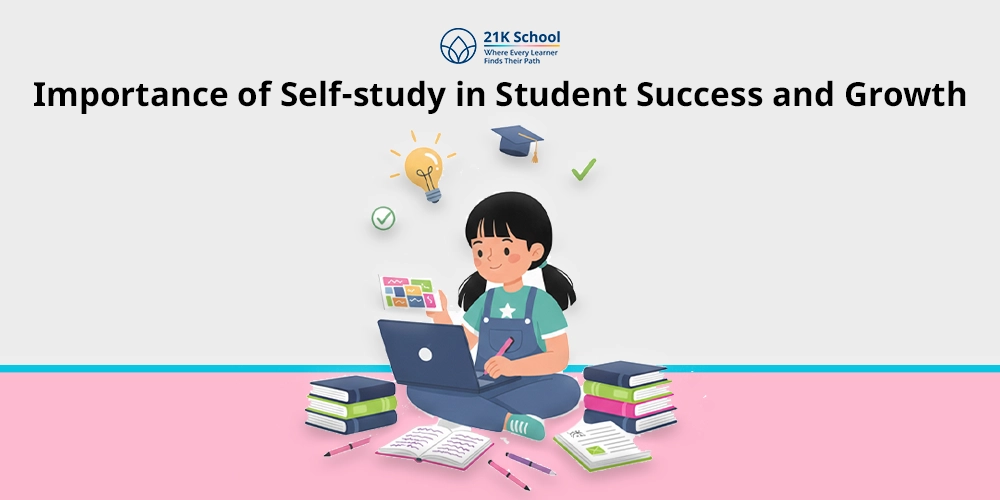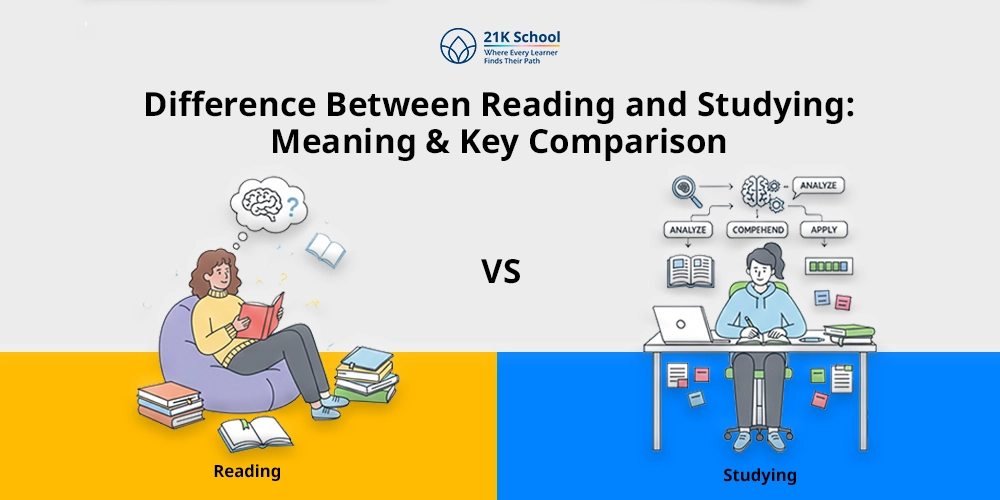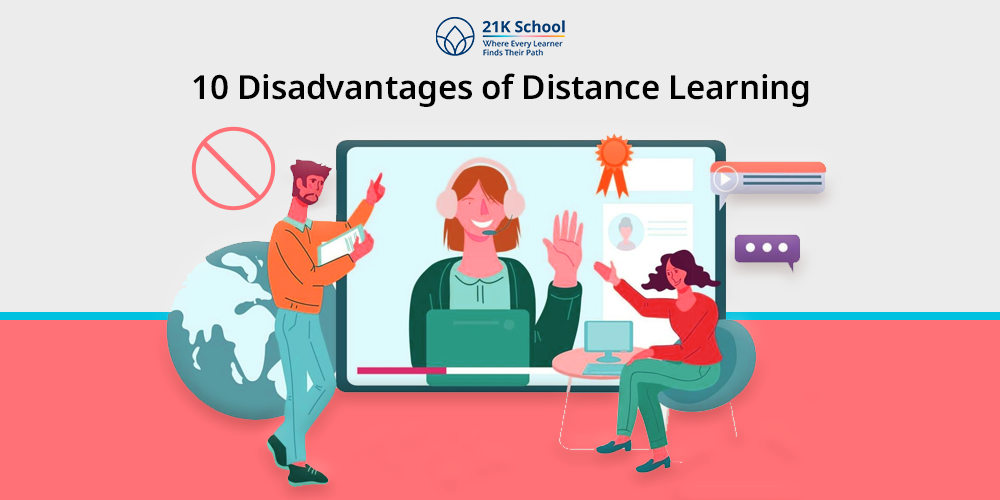
Distance learning has rapidly grown in popularity over the past decade, especially with the rise of digital platforms and global events that pushed education online. While it has opened doors for many learners, it’s not without its challenges.
In this blog, we’ll explore 10 disadvantages of distance learning that students, parents, and educators must consider before choosing this mode of education.
Contents
- What Is Distance Learning?
- 10 Disadvantages of Distance Learning
- 1. Limited Face-to-Face Interaction
- 2. Lack of Hands-On Learning Opportunities
- 3. Requires High Self-Motivation and Discipline
- 4. Technical Issues and Internet Dependency
- 5. Reduced Social Engagement and Peer Networking
- 6. Less Immediate Feedback from Teachers
- 7. Challenges in Practical or Lab-Based Subjects
- 8. Distractions at Home Affect Focus
- 9. Perceived Lower Credibility of Online Degrees
- 10. Accessibility Issues for Rural or Low-Income Students
- Conclusion: Is Distance Learning Right for You?
What Is Distance Learning?
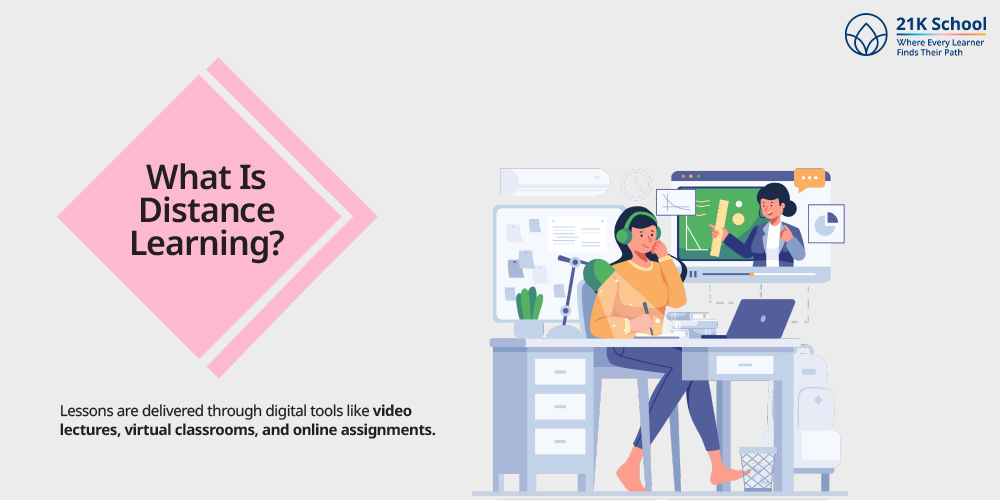
Distance learning, also known as online learning or remote education, refers to a method of learning where students and instructors are not physically present in a traditional classroom setting.
Lessons are delivered through digital tools like video lectures, virtual classrooms, and online assignments.
Although this mode offers flexibility, it also brings a unique set of issues that can impact learning outcomes and overall experience.
10 Disadvantages of Distance Learning
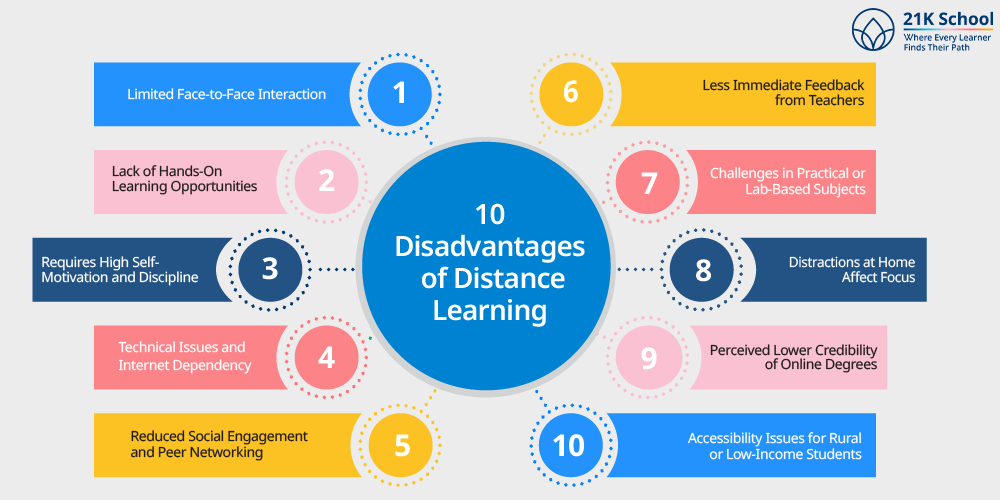
Let’s have a closer look at the 10 disadvantages of distance learning and how it can affect your child’s learning journey:
1. Limited Face-to-Face Interaction
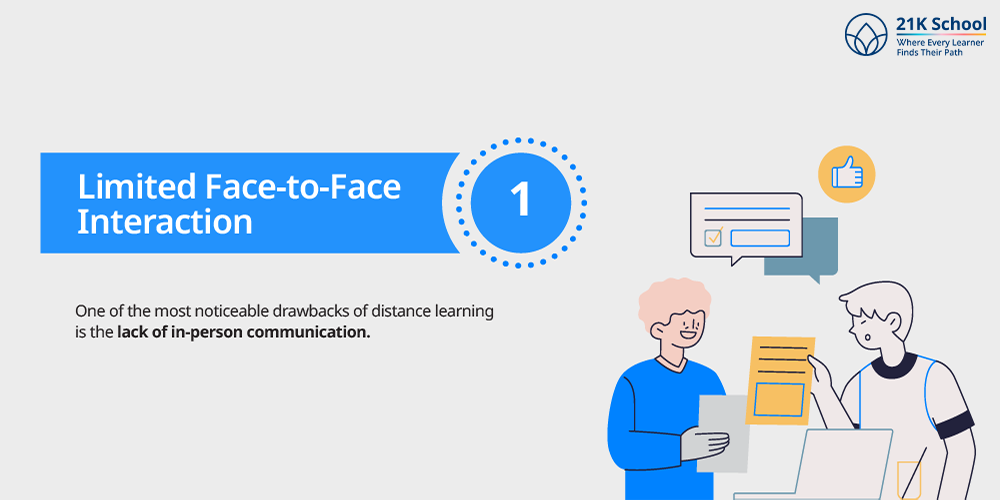
One of the most noticeable drawbacks of distance learning is the lack of in-person communication. Students don’t get the chance to build direct relationships with their teachers or classmates.
This can lead to feelings of isolation and may affect understanding, especially when body language and facial expressions play a role in learning.
Without real-time classroom discussions, learners often miss out on spontaneous questions and explanations that benefit the whole group.
2. Lack of Hands-On Learning Opportunities
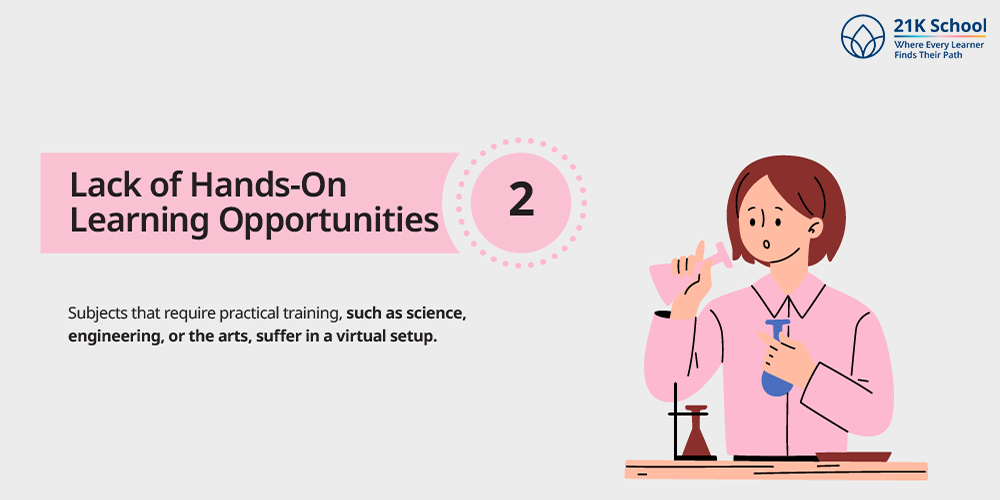
Subjects that require practical training, such as science, engineering, or the arts, suffer in a virtual setup. Online learning often replaces hands-on activities with videos or simulations, which are no match for real-world experience.
The learning gap is particularly evident for younger students and those in vocational fields, where doing things physically is an essential part of mastering skills.
3. Requires High Self-Motivation and Discipline
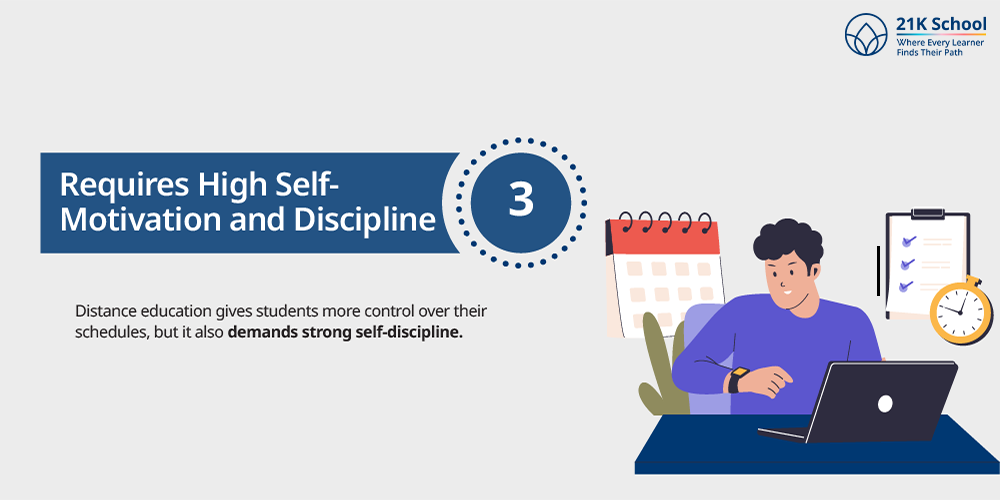
Distance education gives students more control over their schedules, but it also demands strong self-discipline. Without the structure of a physical classroom, it’s easy to fall behind on lessons and deadlines.
Many students struggle to stay motivated when left to learn independently, especially in homes filled with distractions and little external accountability.
4. Technical Issues and Internet Dependency
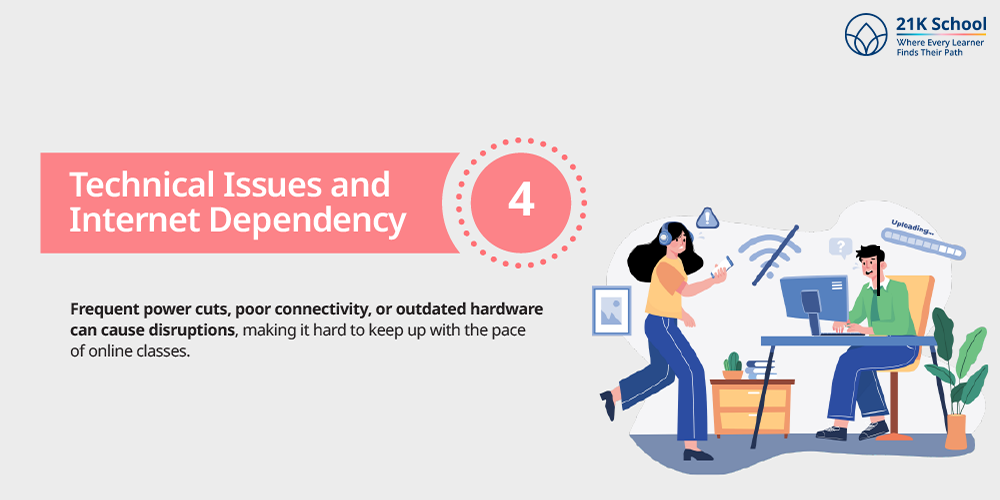
Access to a reliable internet connection and the necessary digital devices is crucial for online education. Unfortunately, not every student has equal access to these tools.
Frequent power cuts, poor connectivity, or outdated hardware can cause disruptions, making it hard to keep up with the pace of online classes.
Even minor technical issues can cause frustration, particularly during live sessions or assessments.
5. Reduced Social Engagement and Peer Networking
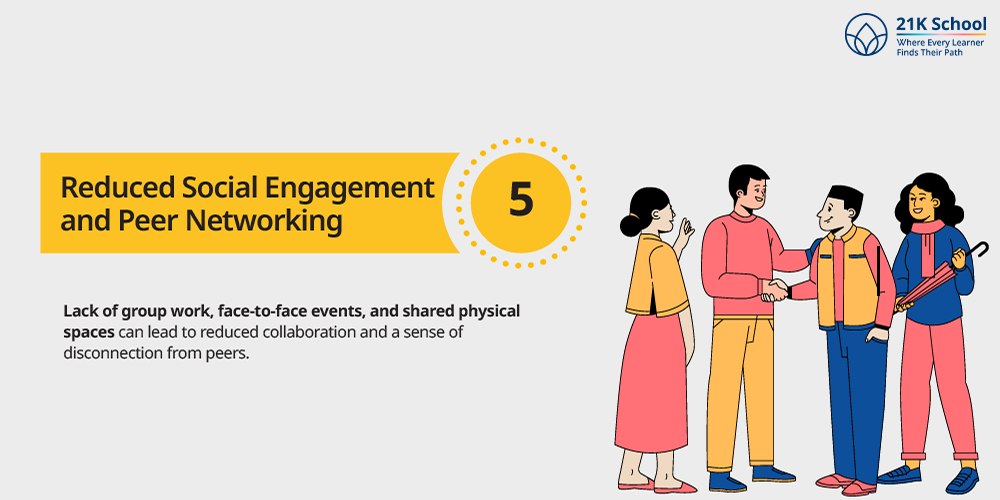
Traditional schools and colleges aren’t just about academics; they’re spaces where students build friendships, learn to work in teams, and develop interpersonal skills. In distance learning, these social experiences are limited.
Lack of group work, face-to-face events, and shared physical spaces can lead to reduced collaboration and a sense of disconnection from peers.
6. Less Immediate Feedback from Teachers
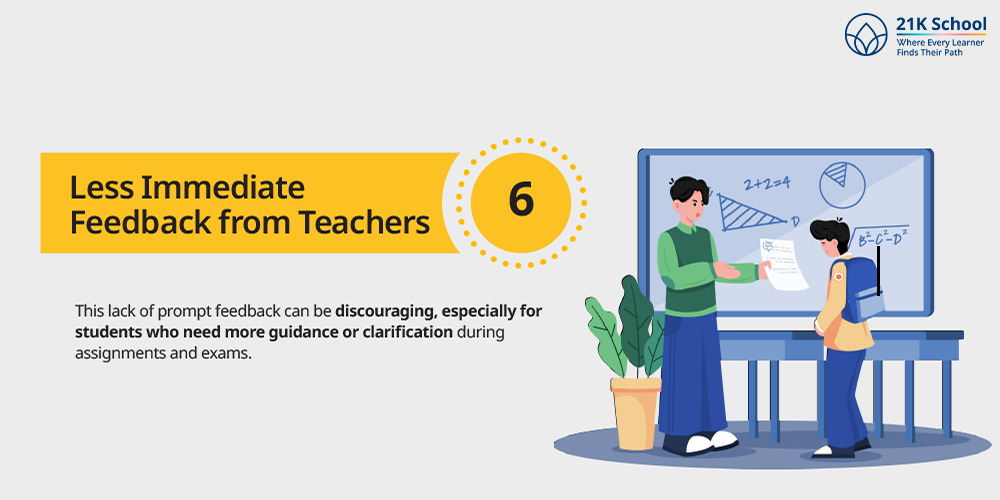
In a physical classroom, students can ask questions and get answers instantly. In distance learning, however, doubts are often resolved through emails or chat boxes, leading to delays.
This lack of prompt feedback can be discouraging, especially for students who need more guidance or clarification during assignments and exams.
7. Challenges in Practical or Lab-Based Subjects
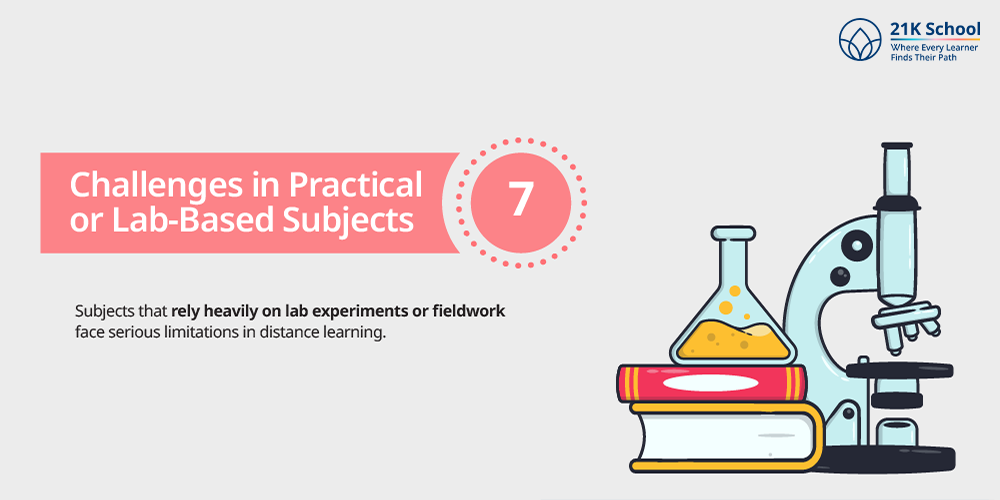
Subjects that rely heavily on lab experiments or fieldwork face serious limitations in distance learning.
While virtual labs exist, they don’t fully replicate the tactile and observational experiences of working with real materials.
This is a major disadvantage for science students, medical learners, or anyone enrolled in a program requiring direct experimentation or physical application.
8. Distractions at Home Affect Focus
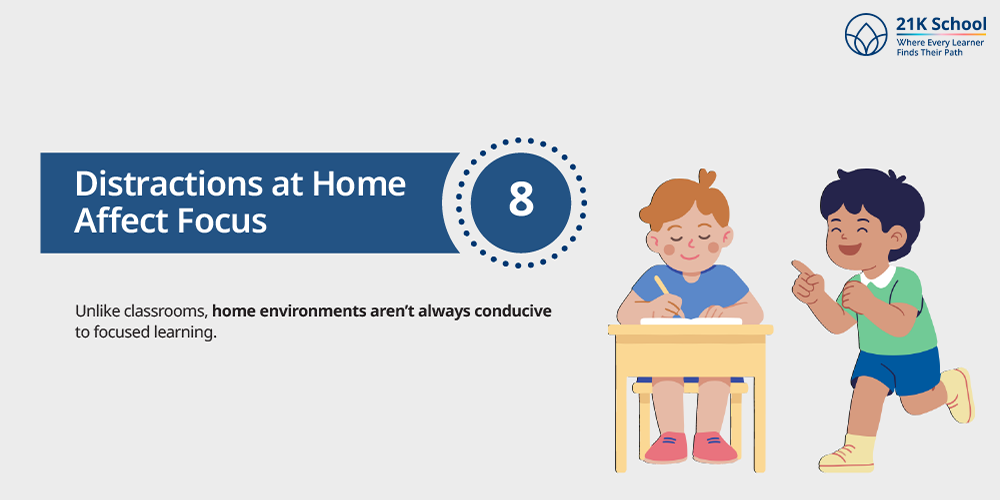
Unlike classrooms, home environments aren’t always conducive to focused learning. Background noise, family interruptions, or the temptation to check social media can easily pull a student’s attention away from the lesson.
Over time, this leads to reduced comprehension and lower academic performance, especially if the learner lacks a quiet and dedicated study space.
9. Perceived Lower Credibility of Online Degrees
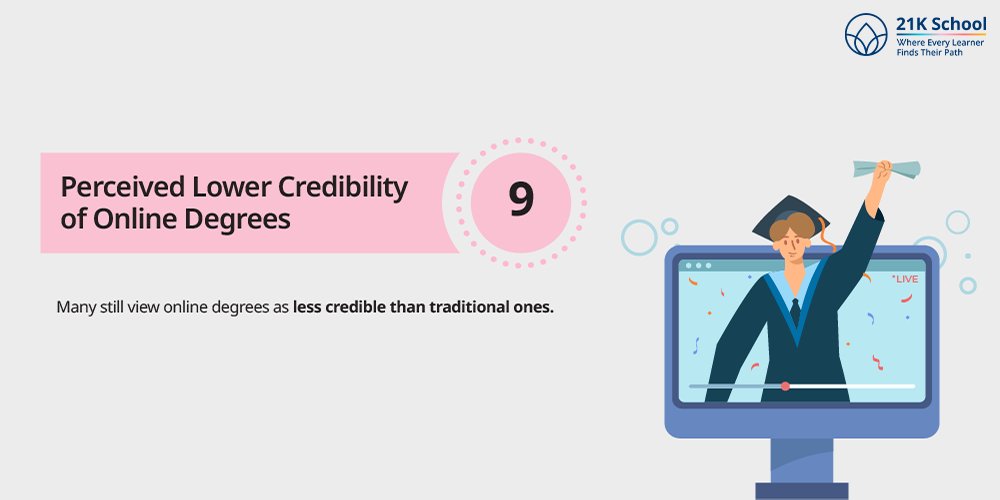
Despite growing acceptance, many still view online degrees as less credible than traditional ones. Employers may question the rigour of remote education programs, especially if they’re unfamiliar with the institution offering them.
This bias can affect job prospects and future academic opportunities, even when the content and effort behind the degree are on par with conventional programs.
10. Accessibility Issues for Rural or Low-Income Students
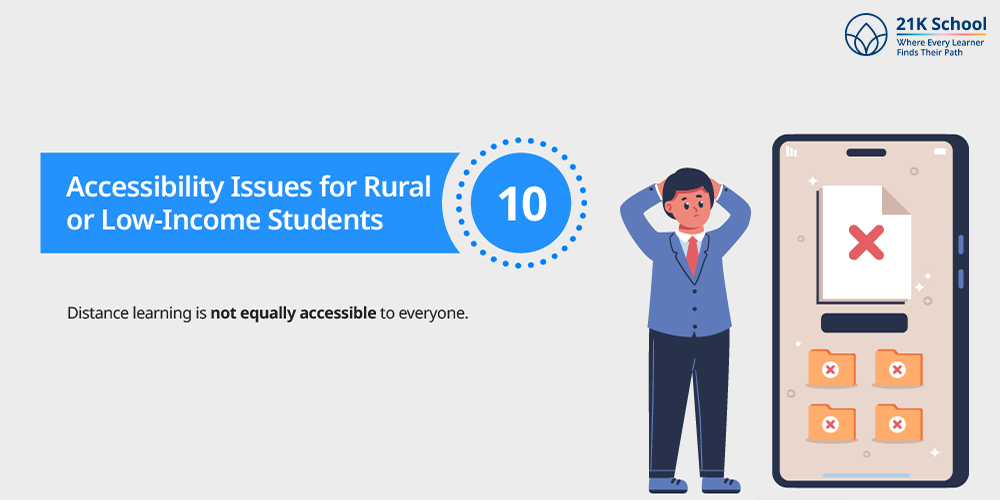
Distance learning is not equally accessible to everyone. Students in remote areas often face severe connectivity issues and may not have access to laptops or smartphones.
Additionally, families with limited income may struggle to afford digital devices, creating a digital divide that deepens educational inequality. For these learners, distance education becomes more of a barrier than an opportunity.
Conclusion: Is Distance Learning Right for You?
Distance learning has made education more accessible than ever, but it’s not without its setbacks. From limited social interaction to the need for strong self-discipline, these challenges can affect how well students learn and stay engaged.
Before choosing this path, it’s important to consider your learning style, home environment, and goals. For some, the flexibility of online learning is a perfect fit. For others, the structure and interaction of a traditional classroom may lead to better results.
Understanding the disadvantages of distance learning helps you make a choice that truly supports your success.
Your next read: Benefits of Distance Learning .

